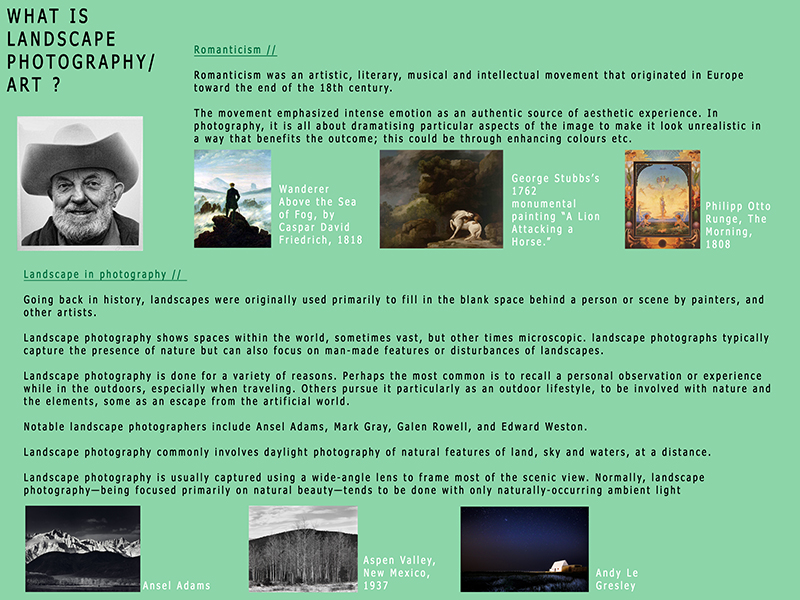
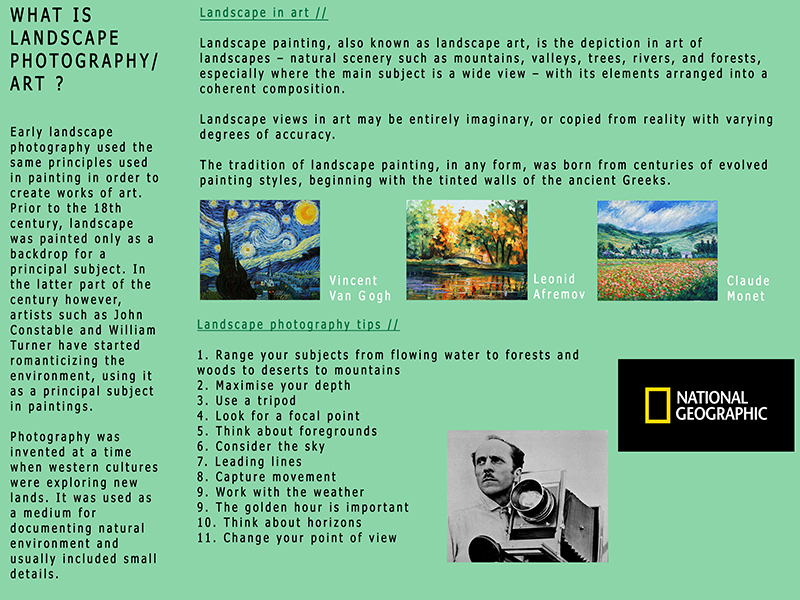

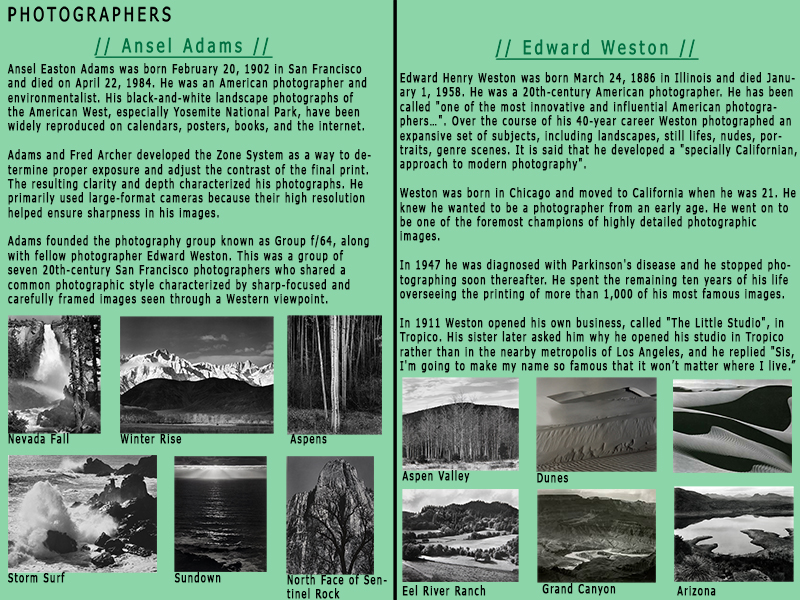




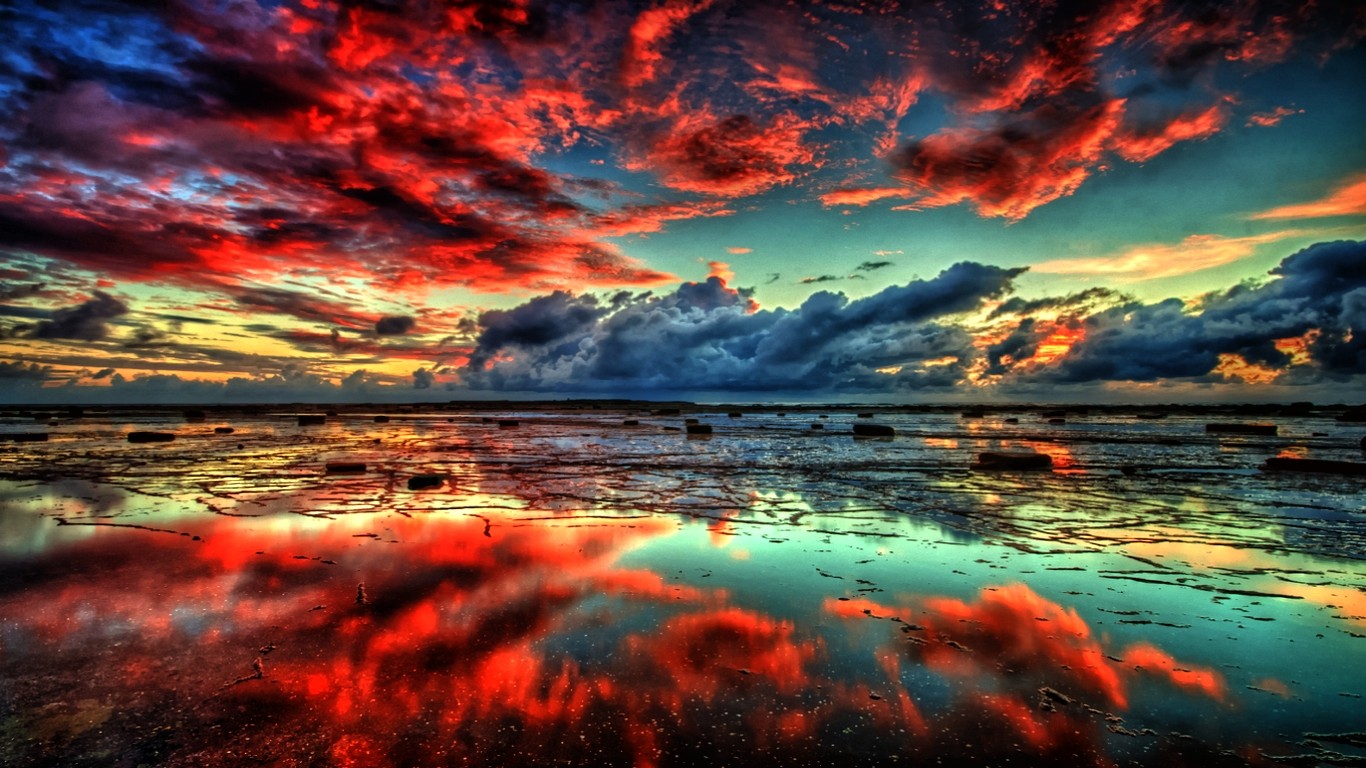
The are two main meanings for Landscapes, these are:
These two definitions tell us that a landscape geographical elements that makes up an area of land. Elements may include waterfalls, tress, woodland, oceans and many others. However landscapes does not only have to be formed by natural elements it can also be made by man made features and many modern day photographers capture images of urban landscapes situated in towns or of architecture which makes up a piece of land.Combining both their physical origins and the cultural overlay of human presence, often created over millennia, landscapes reflect a living synthesis of people and place that is vital to local and national identity. The character of a landscape helps define the self-image of the people who inhabit it and a sense of place that differentiates one region from other regions. It is the dynamic backdrop to people’s lives. Landscape can be as varied as farmland, a landscape park, or wilderness.
Below is a variety of natural,urban and original landscapes:
The history of landscapes goes way back through time when Artists started painting landscapes in ancient times. The Greeks and Romans created wall paintings of landscapes and gardenscapes. After the fall of the Roman Empire, the tradition of depicting pure landscapes declined, and the landscape was seen only as a setting for religious and figural scenes. This tradition continued until the 16th century when artists began to view the landscape as a subject in its own right. The artistic shift seems to have corresponded to a growing interest in the natural world sparked by the Renaissance.
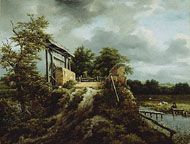
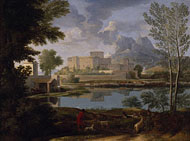
Landscape with a Calm, Nicolas Poussin, 1650–1651
The term ‘landscape’ originally comes from the dutch and then was developed in the netherlands were it became a popular subject for painting. By the 17th century the emergence of classical landscape was seen, In a classical landscape the positioning of objects was contrived; every tree, rock, or animal was carefully placed to present a harmonious, balanced, and timeless mood. The classical landscape was perfected by French artists Nicolas Poussin and Claude Lorrain.

Classical Landscape with Figures and Sculpture, Pierre-Henri de Valenciennes, 1788
During the 18th century, Italy continued to be a popular source of inspiration for landscape artists. Then Engalnd and france became popular withlandscape art. The 19th century held many milestones for the history of landscape art. As the Industrial Revolution altered the traditions of rural life, the old hierarchy of subjects crumbled. This era was also the era that saw the birth of landscape photography which greatly influenced the ways artists painted.
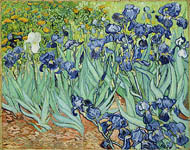
Irises, Vincent van Gogh, 1889
As photography in the 20th century gained acceptance as an art form, artists used the medium to create interpretations of the land through pictorialist effects and, later, through formal compositions of close-up, cropped views of the landscape. In America, photographer Ansel Adams captured the country’s attention with his breathtaking views of the wild beauty of the American West.
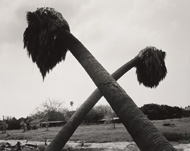
Ontario, California, Robert Adams, 1983

Ansel Adams

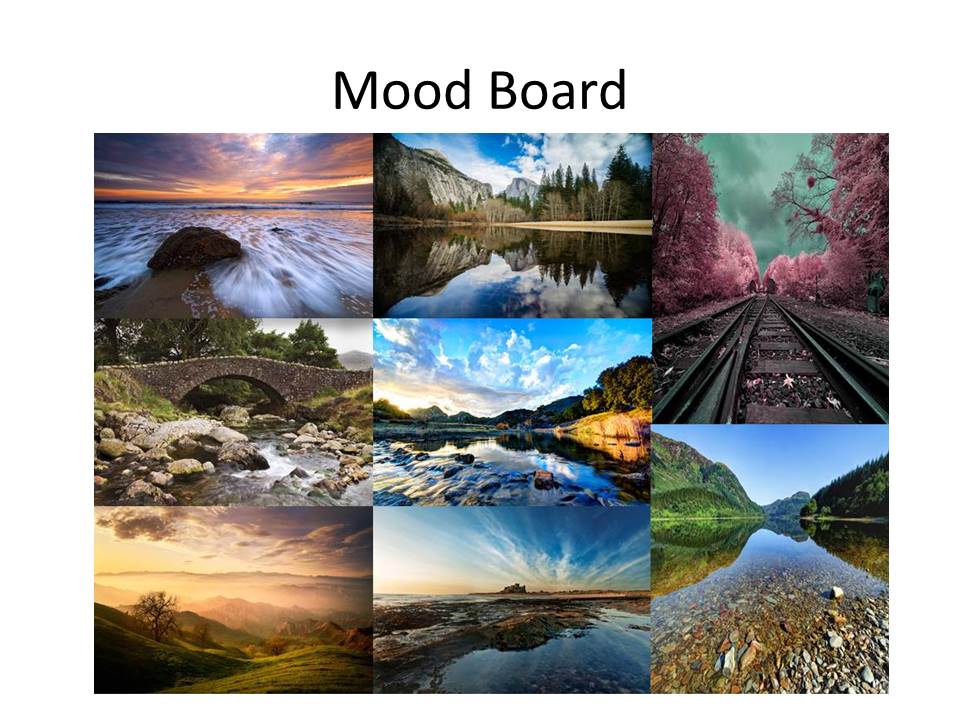

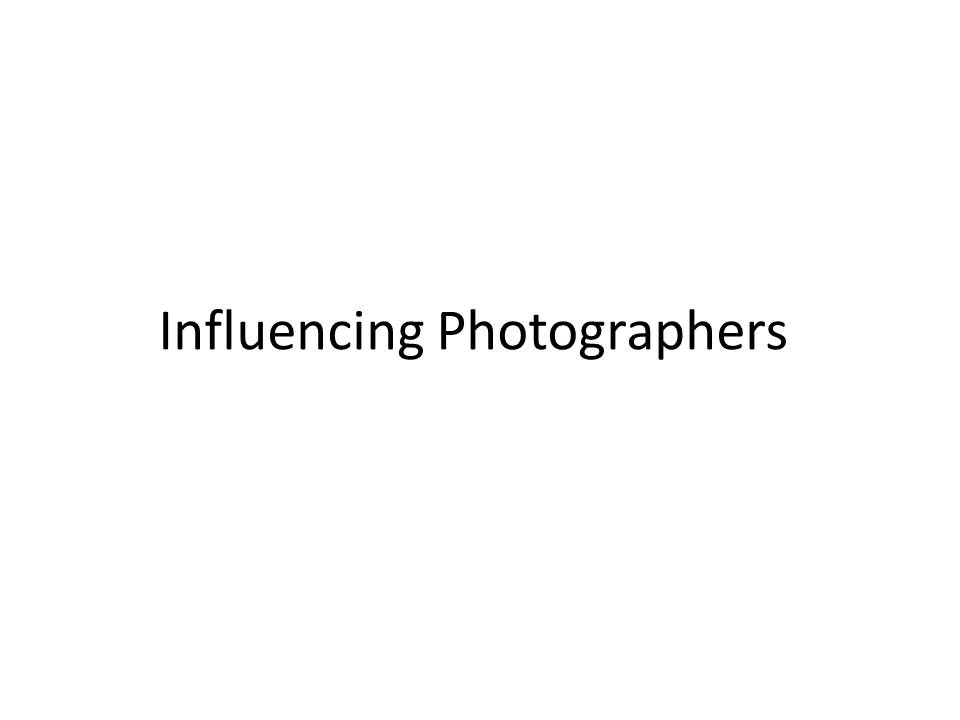
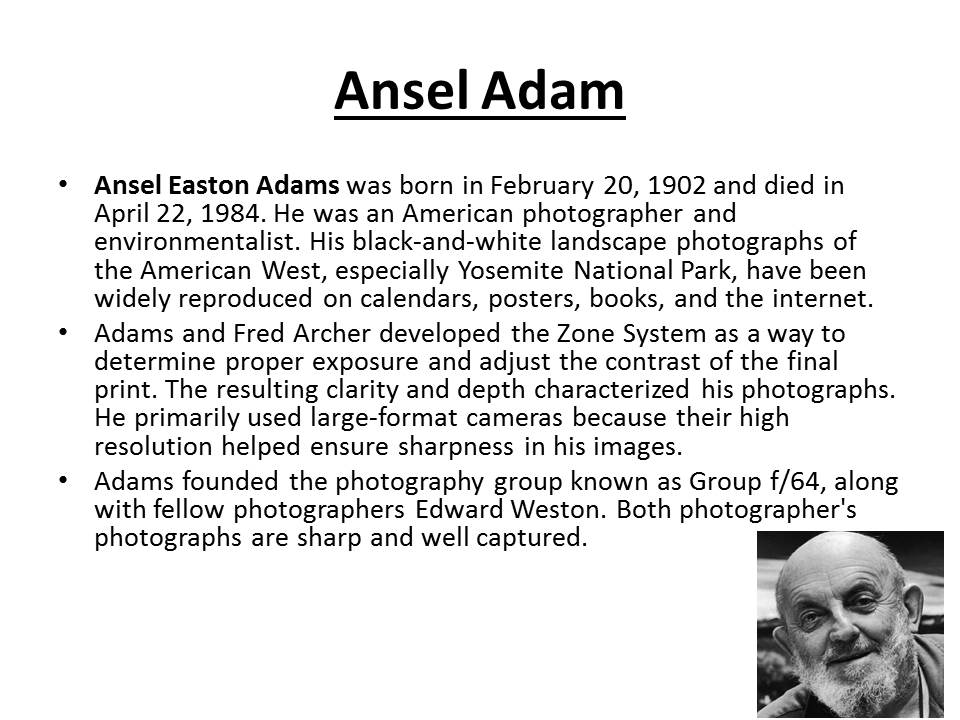
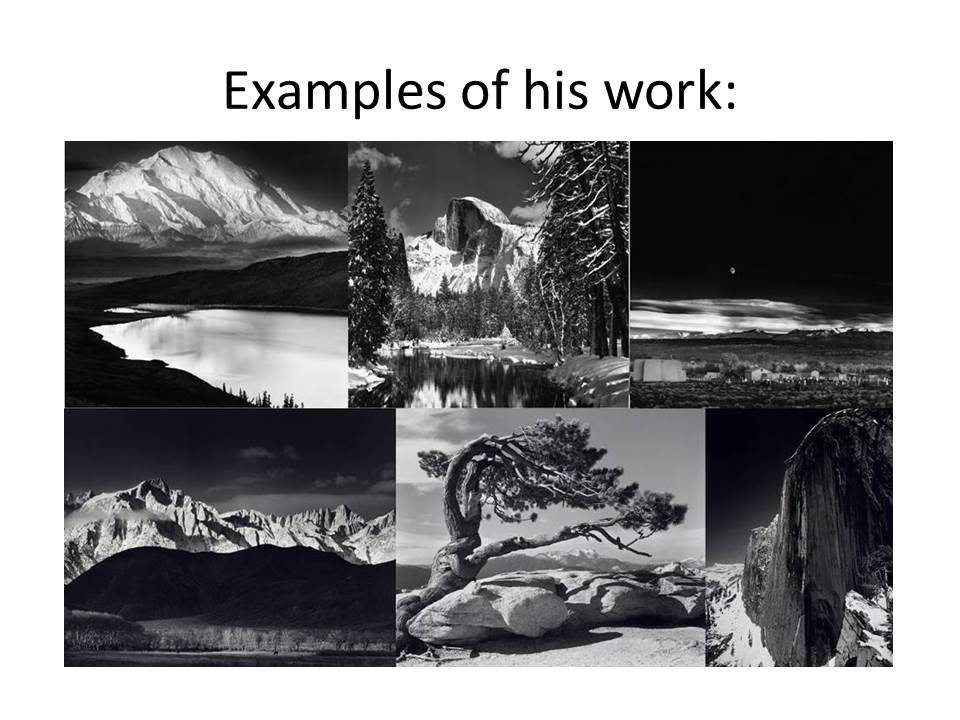

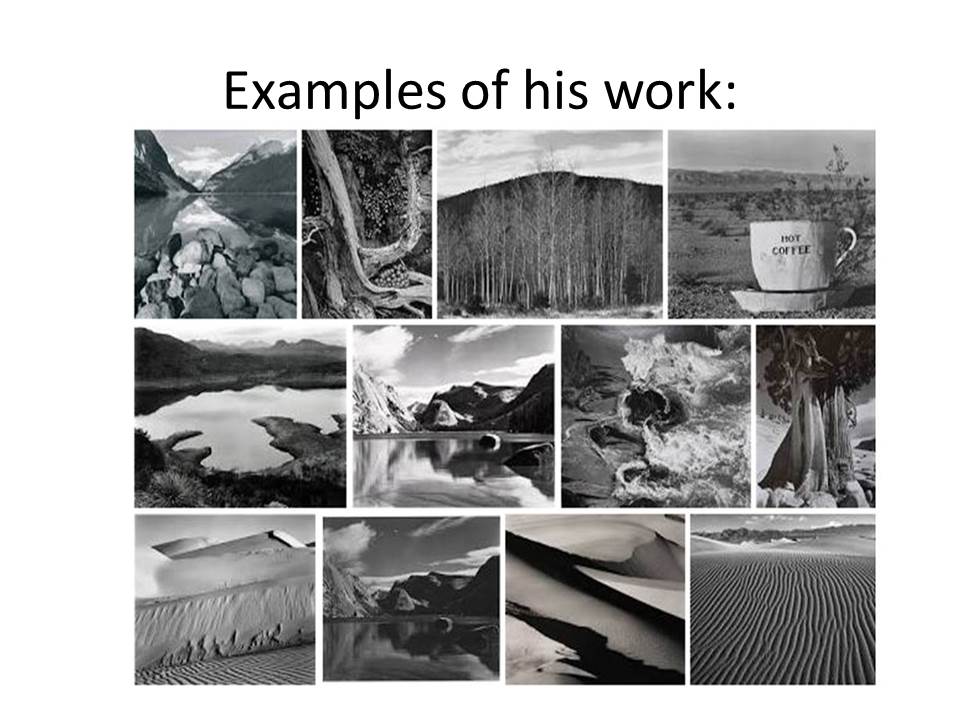
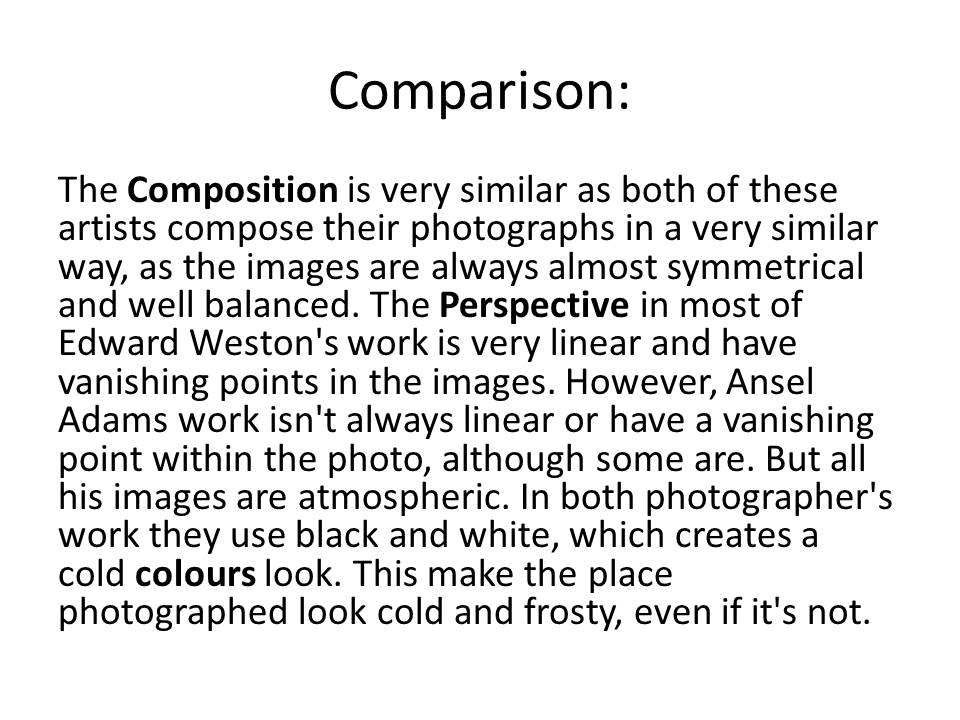
Landscape art and photography is where the essence of nature is captured without a human presence using the landscape itself through various locations such as mountainous, forest , beach, architectural and other places.
Through the centuries, landscape art has developed massively through different influences of the time. With the Medieval ages, there was much more of a Gothic presence, whereas with the renaissance artists such as Leonardo Da Vinci were being somewhat more expressive by influences such as classic poetry; artists expressed themselves more. Within the 17th and 18th centuries more styles such as bracketing whereby an object along the side of the foreground that directs the viewer’s eye into the composition were more commonly adopted. This style still has a strong presence in today’s photograph.
With further developments through the 19th century in landscape, people started to build upon the idea of romanticism to capture the essence and beauty of nature with abstract color with the natural light from the sky, working in cohesion with the composition of the environment of the photograph.
With the turn of the 20th century and early photography being introduced, landscape adapted and took off from where landscape art was at the time. However artists did somewhat make an effort to separate landscape photography from art. From here, the natural environment was seen as inspiration. Artists such as Edward Weston and Ansel Adams took hold of this, expressing their moods and emotions.
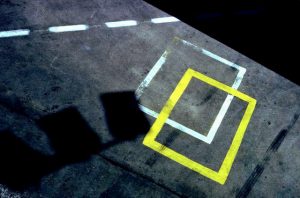
Monday 6th March Pds 1 – 5 = 12D
Tuesday 7th March Pds 1 – 5 = 12A
Wednesday 8th March Pds 1 – 5 = 12E
Friday 10th March Pds 1-5 = 12C
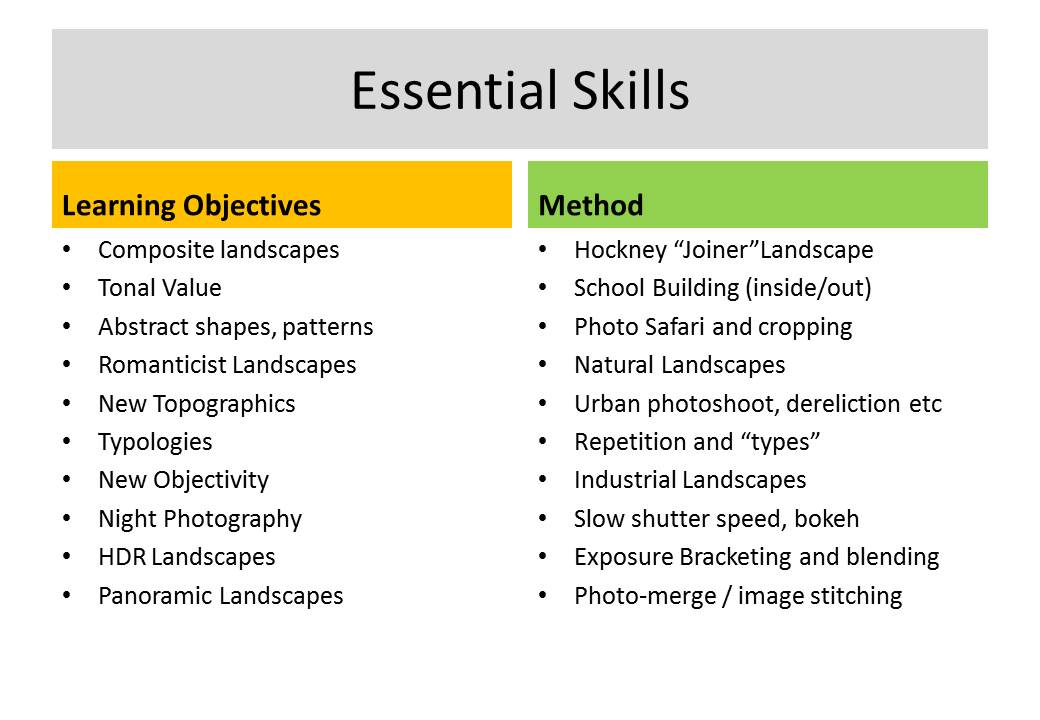
<<<Research and Analysis>>>
3. Create a blog post that defines and explains what Romanticism is in Landscape Photography…include examples and make reference to Romanticism in other art-forms eg painting
4.Create a blog post that shows your understanding of what Psycho-Geography is and how we can use this concept to help us respond to the urban / rural / sea / land scape (s)…

http://www.bbc.co.uk/news/in-pictures-3816943
|
Light: Line: Repetition: Texture: Colour: Composition: |
Which areas of the photograph are brightest? Are there any shadows? Does the photograph allow you to guess the time of day? Is the light natural or artificial? Harsh or soft? Reflected or direct? How does light fall across the objects in the photograph?
Are there objects in the photograph that act as lines? Are they straight, curvy, thin, thick? Do the lines create direction in the photograph? Do they outline? Do the lines show movement or energy? Are there any objects, shapes or lines which repeat and create a rhythm or pattern? Do you see echoes or reflections within the image? Do you see geometric (straight edged) or organic (curvy) shapes? Which are they and how do they relate to each other? Is there depth to the photograph or does it seem shallow? What creates this appearance? What is placed in the foreground, middle ground and background? Are there important negative (empty) spaces in addition to positive (solid) spaces? If you could touch the surface of the photograph how would it feel? How do the objects in the picture look like they would feel? Is there a range of tones from dark to light? Where is the darkest part of the image? Where is the lightest? Are the tones in the photograph balanced or does the image tend towards darkness or lightness overall. How does this affect the mood or atmosphere? What kind of colours can you see e.g. saturated, muted, complementary, primary? Is there a dominant colour? How would this image be different if it was in black and white? Does the use of colour help us understand the subject or does it work independently? How have the various elements in the picture been arranged? Does the image seem balanced or unbalanced? Is it possible to superimpose geometrical shapes on the image to better understand the composition e.g. a pyramid? Has the photographer used the Rule of Thirds?+ |
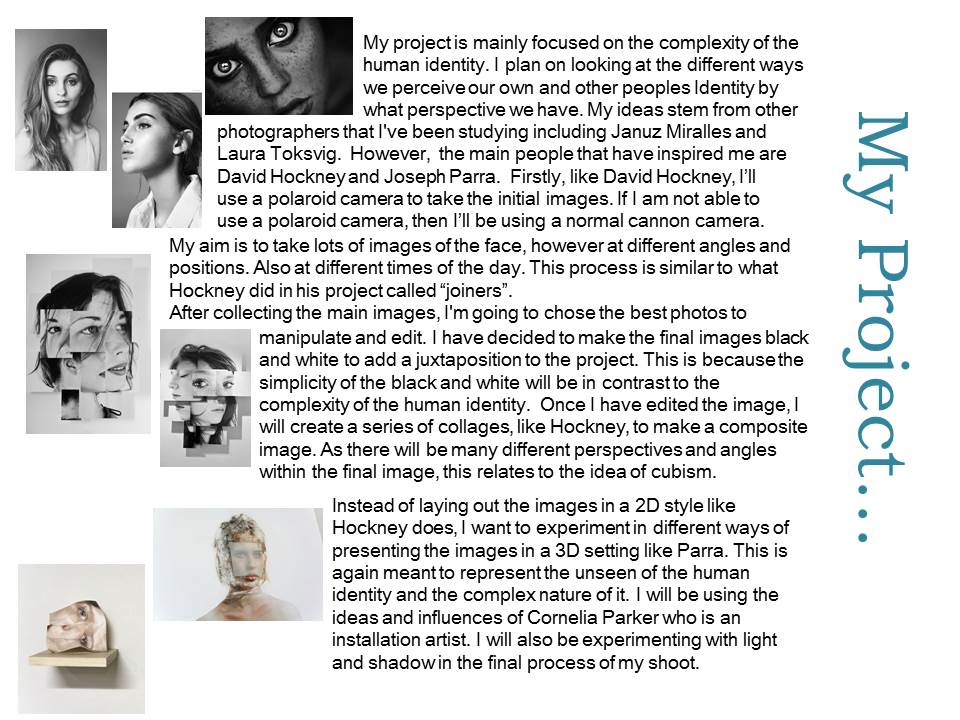

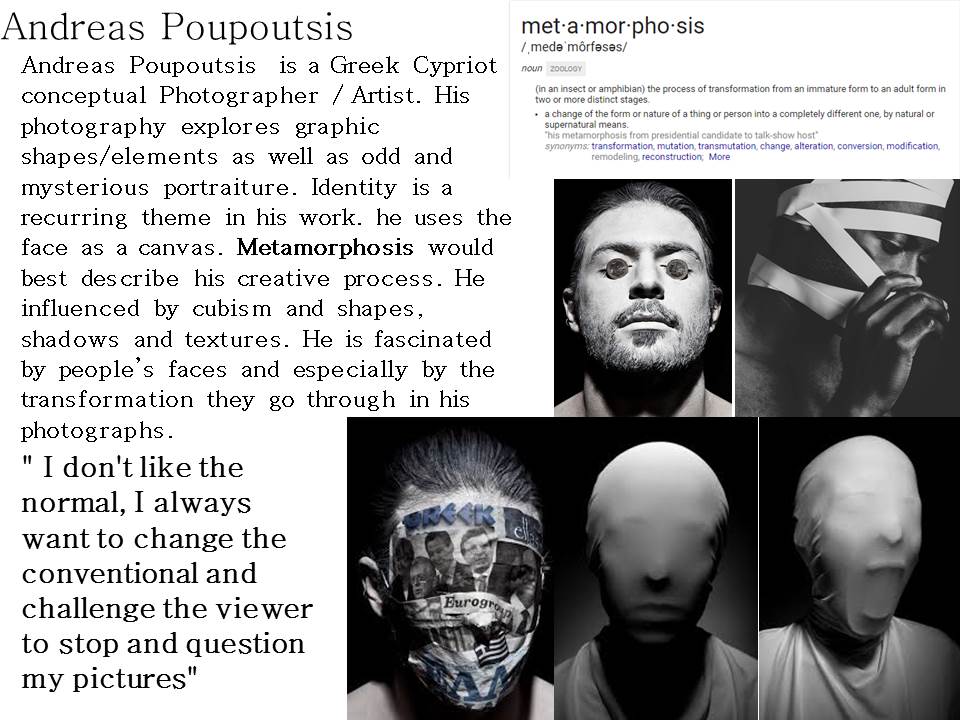

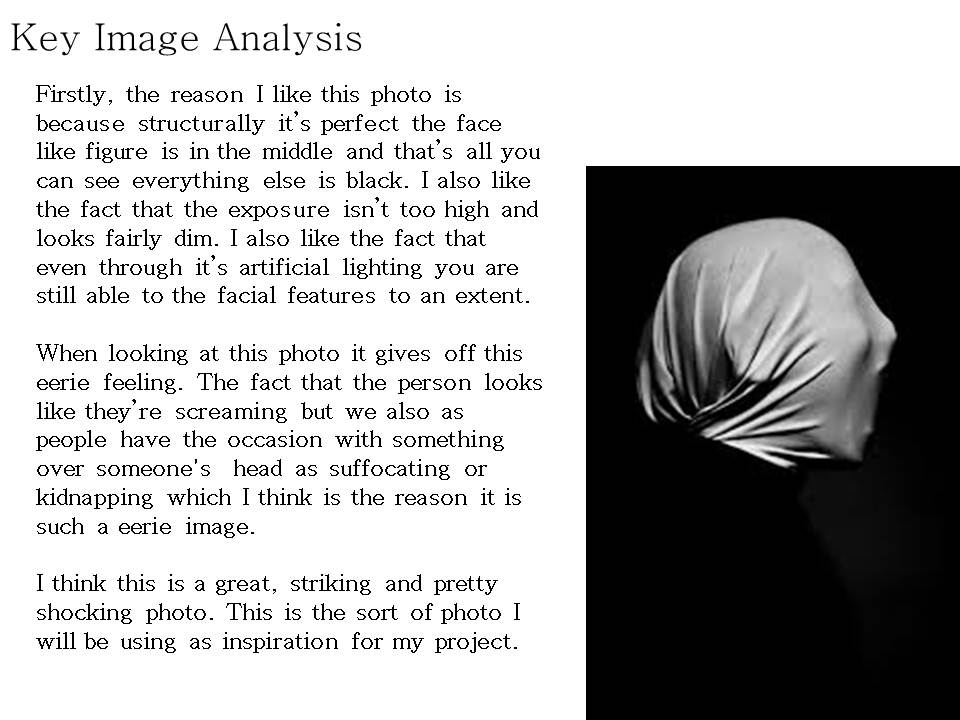
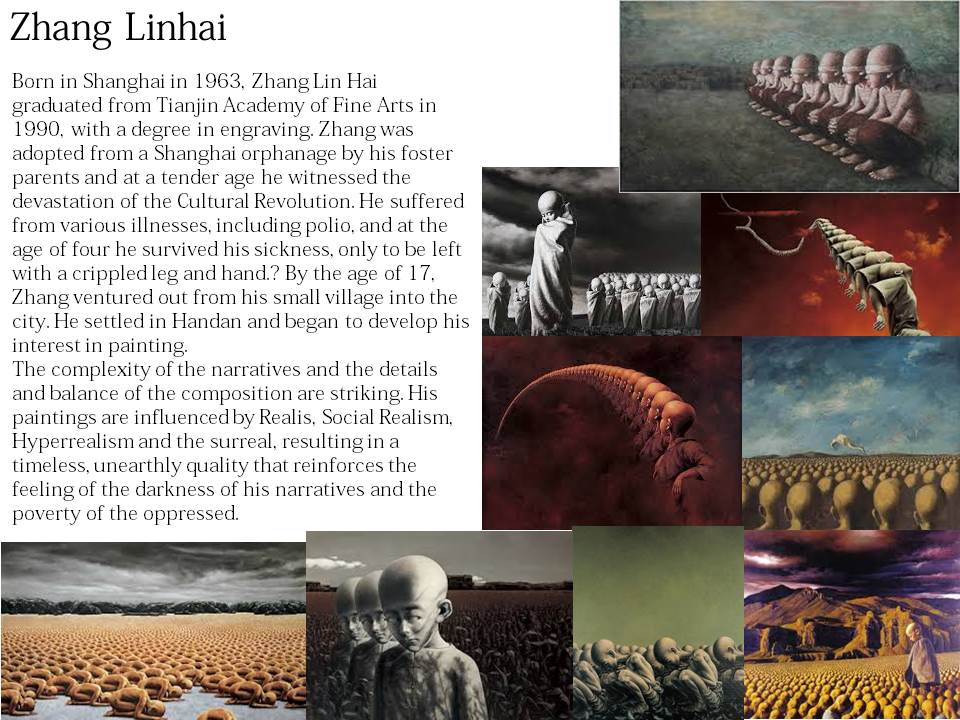

The definition for Self-Portrait is – “a portrait of an artist produced or created by that artist”. Self Portrait to me is where portraits are taken of one’s self depicting them in a certain way to create a specific effect. It can be used to focus specifically for how influences around us can lead to a loss of identity. Therefore to create these effects, within the self portrait you can show these influences having a direct effect on the person. Or on the other hand you can leave these out and focus on the person, in their own surroundings focusing on the loss of identity building upon the idea of isolation. With these influences you can focus upon them to create almost a mad setting where they can be pestering the person into madness. The isolation theme where the person is by themselves could possibly focus on more of the impact of these influences of society that can lose people’s Identity.
Therefore, the definition for identity is “the fact of being who or what a person or thing is”. For me personally, identity can represent the most accurate and recent of someone who feels a certain way. I believe one of the most interesting ways of how artists such as Herbert Bayer and Jerry Uelsmann have done this is expressing how the loss of identity has impacted the subject. This can lead the viewer to believe that the subject is in their own surroundings, facing their problems with no help. Loss of Identity is where something or someone has caused us to lose our identity and this can lead to confusion and uncertainty of who the identity of someone is. Loss of Identity can pose questions such as who we are? If we don’t know who we are, what is the point in us being here? What has led us to be hear? These questions can be asked and answered subtly within a photograph, with various editing effects and photographic techniques incorporated.